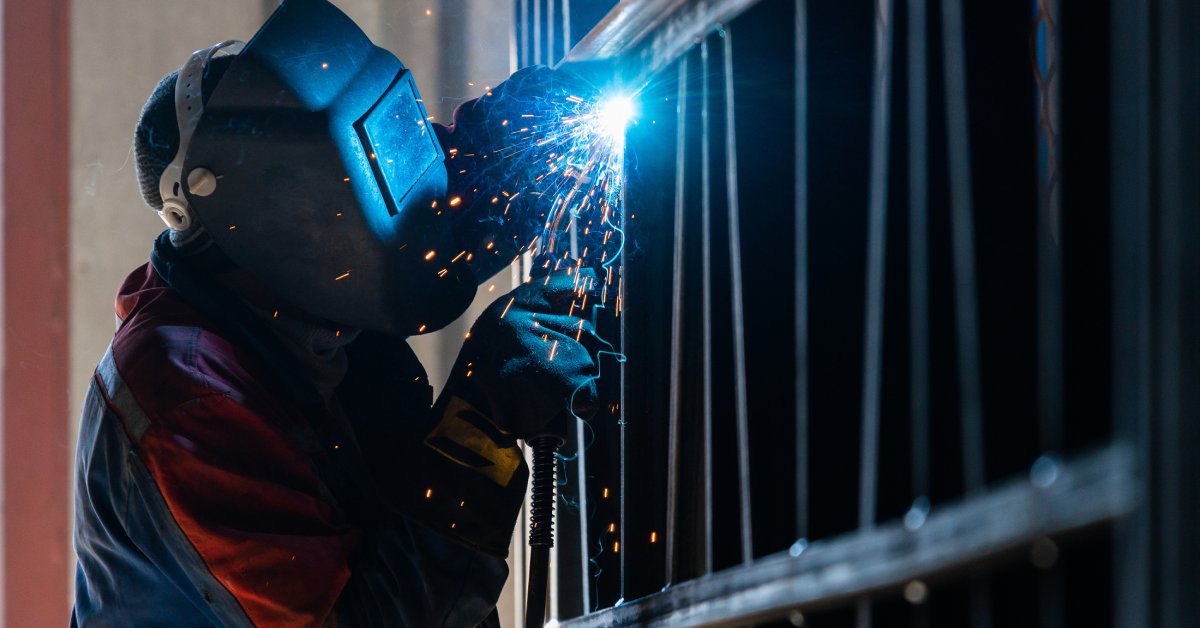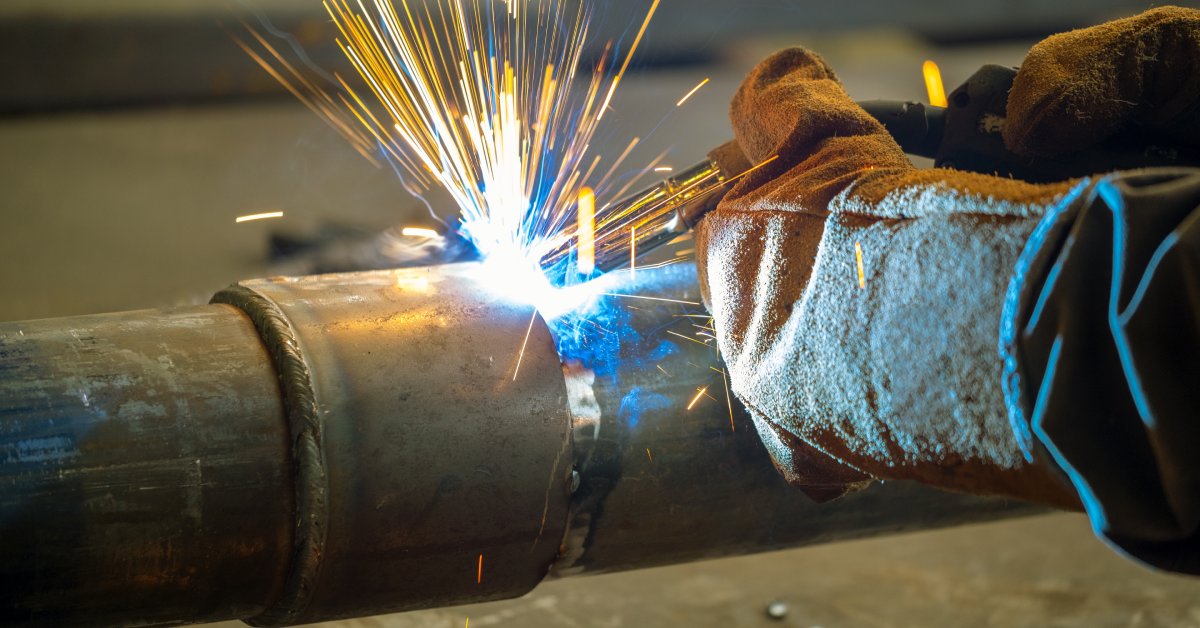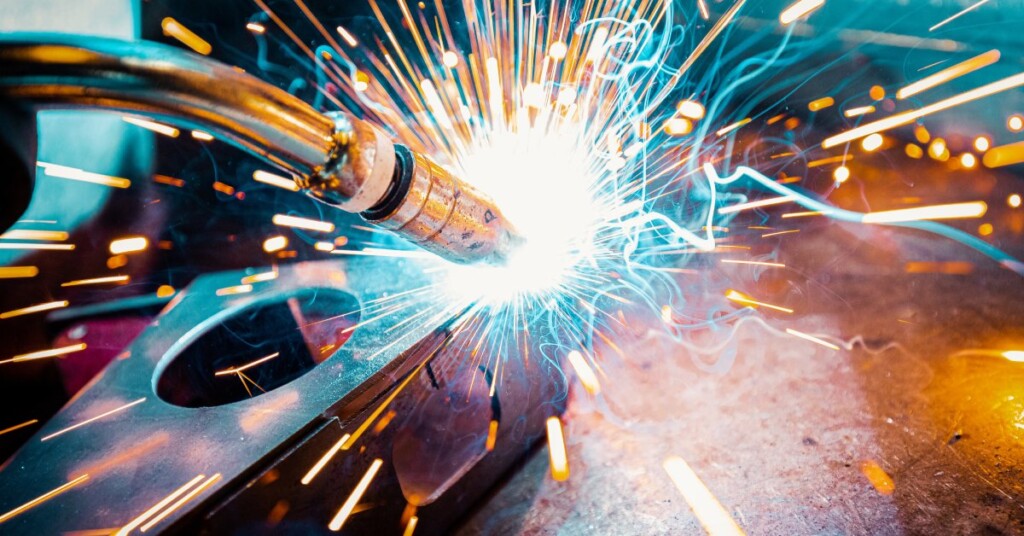Arc welding has become a cornerstone of modern engineering and manufacturing industries thanks to its versatility and efficiency. Whether you’re constructing heavy-duty machinery, working in shipbuilding, or fabricating intricate tools, having a deep understanding of arc welding processes is essential for ensuring precision and quality. Explore the most significant types of arc welding processes, learning their key characteristics, applications, advantages, and limitations to choose the right technique for your project.
What Is Arc Welding?
Arc welding uses electricity to melt and join materials, typically metals. A power source, such as an AC transformer or DC rectifier, produces an electric current that creates the arc, which jumps from the electrode onto the metal workpiece. As this process occurs continuously, the arc conduction generates intense heat to fuse the materials.
Safety is paramount in arc welding, as the process involves risks such as exposure to UV radiation, intense heat, and fumes. Essential safety measures include wearing protective gear, such as gloves, helmets, and flame-resistant clothing, ensuring proper ventilation, and regular equipment maintenance. Comprehensive training and adherence to safety protocols are crucial for preventing accidents and ensuring a secure work environment.
Compared to other types of welding fabrications, arc welding offers several advantages, including faster speeds, compatibility with a wide range of materials, and the ability to weld thick sections effectively. It is a preferred method in industries requiring durable and precise welds.

Types of Arc Welding
Although arc welding involves an electric arc connecting an electrode to a piece of metal, some details determine the outcome and efficiency of the process. The precision, electrode material and coating, speed of welding, and applications vary between the different types of arc welding processes. Understanding these differences helps you find the best option to complete a welding task with a reliable finish in a sufficient amount of time.
Shielded Metal Arc Welding (SMAW)
Shielded metal arc welding (SMAW), or stick welding, is a simple yet robust process in which a consumable electrode coated in flux creates an electric arc to weld metals. Commonly used in construction, shipbuilding, and repair work, many welders favor SMAW for its portability and ability to operate in various environments, including outdoors. However, its limitations include slower speeds and less precision compared to other methods, which makes it less suitable for intricate tasks.
Gas Metal Arc Welding (GMAW/MIG)
Gas metal arc welding (GMAW), or metal inert gas (MIG) welding, utilizes a continuously fed wire electrode and a shielding gas to protect the weld from contamination. GMAW excels in welding thin materials and is an excellent arc welding choice in automotive manufacturing, sheet metal fabrication, and industrial automation.
Its ease of use, speed, and suitability for mechanized welding processes make it ideal for high-volume projects. However, it requires controlled environments due to its sensitivity to wind and drafts, which may affect the shielding gas.
Flux-Cored Arc Welding (FCAW)
Flux-cored arc welding (FCAW) builds on the principles of GMAW but uses a flux-cored wire electrode. This method is self-shielded without external shielding gas or dual-shielded using additional shielding gas, making it highly adaptable to different environments and applications.
It is common in industries such as construction and shipbuilding. The main benefits include its speed and ability to handle thicker materials, but it tends to produce more spatter, requiring additional cleanup.
Gas Tungsten Arc Welding (GTAW/TIG)
Gas tungsten arc welding (GTAW), also known as tungsten inert gas (TIG) welding, is renowned for its precision and quality. The nonconsumable tungsten electrode and a separate filler material allows GTAW to produce clean, high-quality welds with excellent control over heat and detail.
This type of arc welding is best for critical applications, including aerospace, automotive components, and art installations, and is particularly effective for welding stainless steel, aluminum, and magnesium. Its main drawback is the slower speed compared to other methods, requiring a skilled hand for best results.

Submerged Arc Welding (SAW)
Submerged arc welding (SAW) differs from other types of arc welding in that it utilizes a granular flux to cover the weld area, preventing exposure to air and contaminants. This process creates high-quality welds with deep penetration, making it a perfect fit for heavy-duty industrial projects, such as pipelines, pressure vessels, and structural beams. With high welding speeds and efficiency, SAW significantly reduces labor costs, but it is limited to flat or horizontal welds.
Plasma Arc Welding (PAW)
Plasma arc welding (PAW) uses a constricted, high-energy arc to achieve precision and efficiency. It closely resembles TIG welding but offers greater control and the ability to achieve deeper penetrations.
PAW is ideal for high-volume industrial applications where detailed welds are required, such as in the production of thin metal sheets, aerospace parts, or medical instruments. While PAW handles a variety of scenarios, its equipment is more complex and expensive than other methods.
Carbon Arc Welding (CAW)
Carbon arc welding (CAW) uses carbon electrodes to create an electric arc for joining or repairing metal parts. This method is especially useful for maintenance and repair applications in industries such as manufacturing and transportation.
It is particularly effective for joining nonferrous metals such as copper and brass. Although CAW has largely been replaced by newer techniques, such as PAW and SAW, it remains valuable for specific cases due to its cost-effectiveness and simplicity.
Electroslag Welding (ESW)
Electroslag welding (ESW) is a specialized vertical welding process designed to join thick plates in a single pass. It is reliable in heavy industries such as construction, shipbuilding, and large machinery manufacturing. ESW’s ability to weld large, thick structures efficiently makes it unique, though its use is limited to vertical seams, and it requires operators with significant expertise.
Electrogas Welding (EGW)
Similar to ESW, electrogas welding (EGW) is tailored for vertical seams, but EGW also allows for more flexibility in its operation and can be used for continuous welds. It is common in shipbuilding and storage tank construction. Although slightly less efficient than ESW for extremely thick plates, EGW offers better adaptability in terms of applications.
Atomic Hydrogen Welding (AHW)
Once considered the pinnacle of precision welding, atomic hydrogen welding (AHW) uses atomic hydrogen gas to shield and sustain the arc. Although modern techniques such as GTAW have largely superseded it, AHW still finds use in heat-intensive applications and projects requiring exceptional strength, such as repairing heavy castings or welding specialty metals.
Arc welding processes come in various forms, each suited to specific project requirements and industries. From the simplicity of SMAW to the precision of GTAW and the efficiency of SAW, understanding these techniques enables engineers to select the most appropriate method for their needs. By keeping safety in mind and leveraging advancements in technology, arc welding continues to drive innovation and quality in modern engineering.
